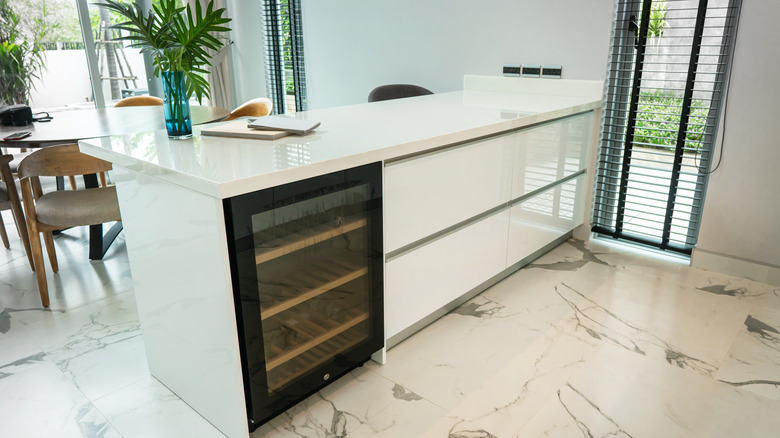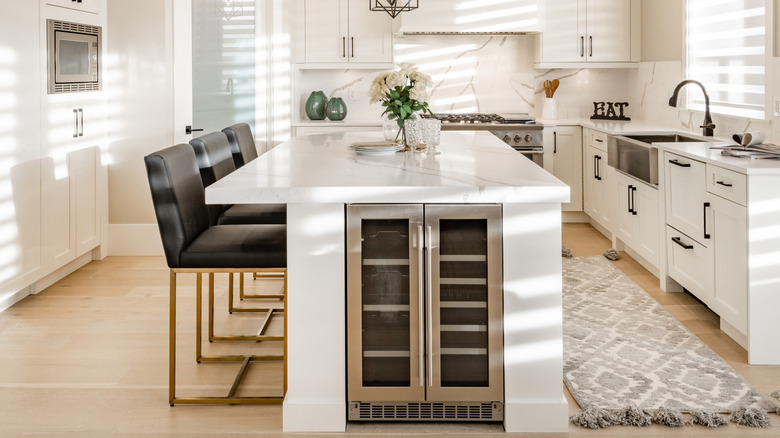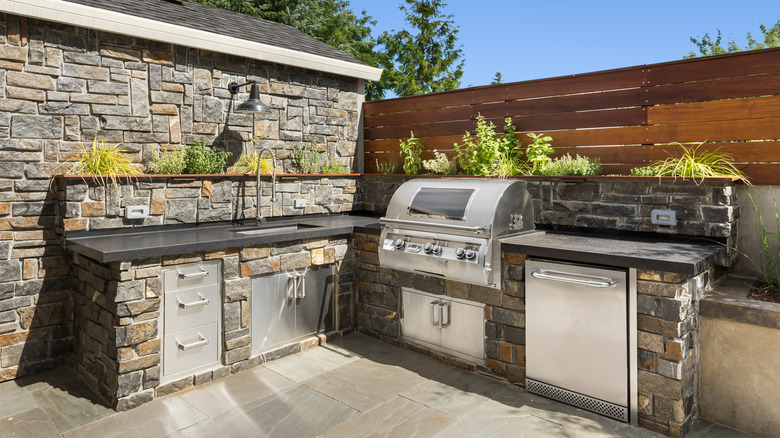Crucial Things To Consider When Buying An Under-Counter Fridge
If only there were a magical refrigerator that took up little space yet had tons of storage inside. Unfortunately, it's not easy to find a fridge with a small footprint and big storage capacity. But you can make life with an undersized fridge a bit more convenient by adding a second under-counter refrigerator to your kitchen. When buying an under-counter fridge, there are several crucial things to take into account, including size, style, vent location, design, energy efficiency, and noise level.
Under-counter fridges don't take up extra floor or counter space since they're tucked away into the cabinets, and they are usually bigger than a mini-fridge — not quite magical, but still a great way to add sophistication and convenience to your kitchen. They're useful even if you have a full-size model as your main fridge, particularly if you have a large family or host guests often. Under-counter fridges can free up space in the main fridge by creating a designated spot for wine and other beverages. They're also commonly used for storing extra ingredients and snacks.
Once an under-counter fridge is installed, it stays put; it's not portable like a mini-fridge. But there are many options for its location — you might add it to a kitchen island for out-of-sight convenience, or install the fridge under a counter or desk in a rec room or office so you don't have to trek to the kitchen for a drink or snack. Some models can even be added to outdoor kitchens. Your plans for your under-counter fridge will partially determine the best model for your needs.
Type, size, and vent locations for under-counter fridges
There are a few different types of under-counter fridges. Some are simple refrigerators with a door and a single section of shelved storage. Others are designed to store wine at the proper temperatures or hold cans and bottles. There are also drawer-style fridges that allow you to access food from above without bending down too far. Some models have multiple temperature zones, and some can even make and store ice.
Once you've chosen a style, you can narrow your options down by size. Counters are usually 36 inches tall, so under-counter fridges must be slightly shorter to fit underneath. They usually vary from 18 to 26 inches deep and may be up to 24 inches wide. Measure your space to determine the right dimensions for your fridge, leaving an inch of buffer space on each side. But just because a fridge is the right size for your cabinet doesn't mean that it's suitable. The location of the vent also needs to be taken into account. True under-counter fridges aren't free-standing like mini-fridges; they have front-facing vents, so they can be installed fully flush against the cabinetry. While you can choose to use a fridge with a back or side vent, you can't safely install it flush with your cabinets; you'll need to leave room for airflow.
You can find small fridges for well under $1000, but they are often not front-venting. They also may not be standard widths, so renovations to your cabinetry might be necessary to make the fridge fit. For a high-quality under-counter fridge, expect prices in the $1500 to $3000 range or higher.
Design, efficiency, and warranties for under- counter fridges
Design also plays a role in choosing an under-counter fridge. It's possible to seamlessly blend the fridge into your kitchen by choosing a finish that matches your other appliances. Some models are also "panel-ready," so you can add overlay panels that are identical to your cabinets. Other design components to consider include the door style, interior lighting type, and storage options.
As with any fridge, it's important that an under-counter refrigerator can keep items at a stable temperature, for both taste reasons and for food safety. Built-in models have an advantage over free-standing fridges here, as they are better at maintaining a consistent temperature. Consider looking for a fridge with an Energy Star rating, which signifies that it's in the top 25% for efficiency among all models. Some even have extra energy-saving features, like doors that automatically close.
If you're sensitive to noise, check customer reviews to determine how quiet different under-counter fridges are; you don't know the bliss of a quiet appliance until you've experienced the disruption of the opposite. Lastly, consider your peace of mind. Take a look at the warranties offered by different brands and retailers — longer warranty periods, with more parts covered, can make life significantly easier if repairs are needed.


